Wilderness Navigation Skills
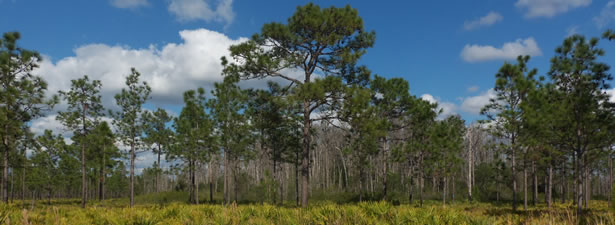
Why would a prepper need to know about wilderness navigation? Most likely your bug out location is somewhere away from civilization. You’re not going to be in eye sight of your bug out location at all times. You’ll be exploring, you’ll be fishing or hunting or picking berries and it’s very easy to get lost in the woods. Even very experienced woodsmen can get lost in the woods. If the SHTF and you get lost, there probably isn’t a rescue team coming, you might have to rescue yourself. In this article, I’m going to go over some of the best tips I know for wilderness navigation that could save your life.
The first step is knowing which way to go by knowing your bearings. The second step is to make sure that you stay on course. The third step is to make sure that if you don’t reach exactly where you want to, you are still able to get to your destination. The last step is to “blaze your trail” so that you can be found easier and you can backtrack if necessary.
Getting your bearings
If you don’t have a compass or it has broken or for whatever reason it doesn’t work you’ll still need to be able to get your bearings and know which way is north, south, east and west. Most of the time in the wilderness you’ll have some sort of an idea of where you are, for instance you know the creek is to the west or the coast is to the east, that sort of thing. And once you find the creek or the coast you can then get back to camp or your bug out location. Simply knowing which way is north, east, south and west could save your life.
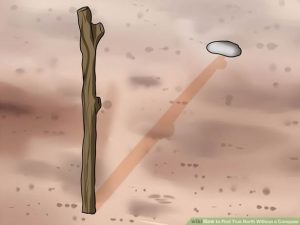 The problem is which way is east? It sounds easy, but it’s not as easy as it appears because the sun doesn’t rise and set exactly in the east and west and it might not be first thing in the morning or dusk to be able to get an approximation of east and west. Here are some really simple methods to help you get your bearings.
The problem is which way is east? It sounds easy, but it’s not as easy as it appears because the sun doesn’t rise and set exactly in the east and west and it might not be first thing in the morning or dusk to be able to get an approximation of east and west. Here are some really simple methods to help you get your bearings.
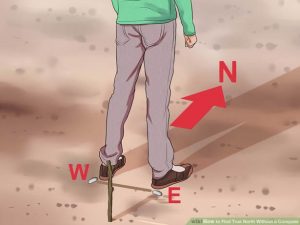 Stick in the ground – Put a stick in the ground and mark where the shadow finishes on the ground. Wait 15-20 minutes then mark another spot where the shadow finishes. You now have two markings on the ground. This is your west (marking 1)- east (marking 2) line.
Stick in the ground – Put a stick in the ground and mark where the shadow finishes on the ground. Wait 15-20 minutes then mark another spot where the shadow finishes. You now have two markings on the ground. This is your west (marking 1)- east (marking 2) line.
Branches of a tree – If you find that one side of a tree has thicker branches than the other side, it could be because thicker branches will point toward the sun. If the other side of the tree has thinner branches that are more vertical, it’s because they’re not facing the sun and are reaching up, searching for light. Just like the moss example, take an average of several trees and don’t rely on just one tree.
Moss – moss tends to grow on the side of the tree or rock that isn’t facing the sun. Don’t just rely on one rock or tree, take an average of several trees to reduce the risk of error.
Stars – The north star is a star that most people can find easily.
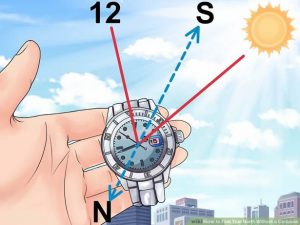 Use a watch – Using an analog watch, point the hour hand at the sun. This is one point of reference. The other point of reference is the 12 on the watch. Draw a line down the middle of the two points of reference all the way across the watch face, this is your north-south line.
Use a watch – Using an analog watch, point the hour hand at the sun. This is one point of reference. The other point of reference is the 12 on the watch. Draw a line down the middle of the two points of reference all the way across the watch face, this is your north-south line.
How to stay on course
This is a bigger problem than what it might first appear. This is the number one reason why people “go around in circles” in the jungle or in dense forest and are never seen again. You’re probably thinking, how does someone go round in a big circle, how stupid. It happens far too often and if you don’t have some basic navigation skills, it could happen to you too.
Use a big stick – If you don’t have a compass or it has broken or for whatever reason it doesn’t work. You can still navigate dense bushland easily using a method first used in Scandinavia. Use one of the methods above for getting your bearings. Then, using a really long stick, place it through the dense area you can’t pass. Then walk around the dense area and find the end of the big stick and follow in the direction where the stick is pointing.
Boxing – This is the method to use if you have a compass on you and you want to get around a big obstruction, it could be a mountain or really dense part of forest or a swamp.
Boxing Step 1: Use your compass to turn right 90 degrees, then walk a suitable distance in that direction to get around the obstruction. Make sure you count how many steps you’re taking.
Boxing Step 2: Once you think you’ve walked far enough around the obstruction, turn left 90 degrees. Walk as far as needed to clear the obstruction.
Boxing step 3: Use your compass again to turn left 90 degrees and walk in that direction using as many steps as you did in boxing step 1.
Boxing step 4: Now you’re at the location you wanted to be in, turn to the right 90 degrees again and off you go, in the right direction without getting lost and off course.
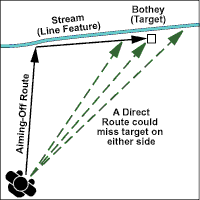
Aiming off – courtesy of goforawalk.com
If that’s the case, once you hit the road, do you go left or right? If you aim off to the left of your desired location that’s on a road, once you get to the road, you then know that you should turn right and follow the road until you get to your desired location. This method adds a bit of extra distance to travel, but you will reach your destination.
Blazing your trail
Probably the biggest dilemma you’ll face is “do I stay or do I go”. Under normal circumstances, most of the time it’s better to stay put and have rescuers find you. That’s not always the case, there have been countless times when rescuers have found someone just a few hundred yards from where they were looking, but it’s too late for them and they’ve perished. In a shtf situation, there’s probably no rescue team coming, only your family, and hopefully they have an idea of where you are.
If you do decide to find your way back, blaze your trail. All that means is mark trees indicating where you’re going. You could also put branches in the shape of an arrow indicating in which direction you are going.
The other benefit of blazing your trail is that there are many markers for rescuers to find you. If they’re scanning a large area and they find a marker indicating you’re going in a certain direction, they know they’re on the right path and can narrow the search down to that area which means they’ll find you faster which could save your life.
The other thing with blazing your trail is that if you made a bad decision and were going in the wrong direction or you got to an impassable area, you’ll want to get back to where you started. Blazing a trail makes it really easy for you to backtrack and get back to where you were originally.
![]()
About the Author
This article was written by Steve the Survivor from topsurvivalweapons.com. Steve loves everything out doors and loves testing his survival skills.
All content provided by Steve and topsurvivalweapons.com.
Header image courtesy of Daniel Oines. Aiming off image provided courtesy of goforawalk.com. All other images courtesy of wikihow.
--